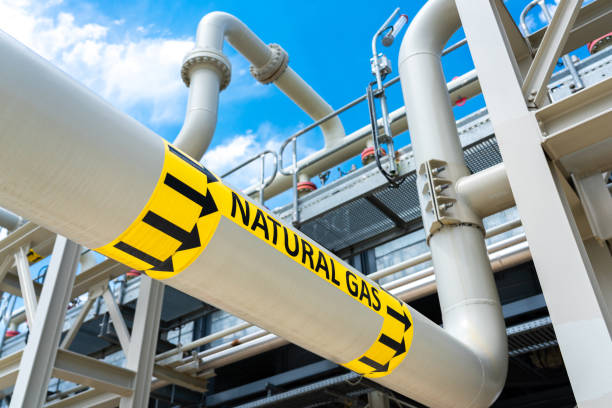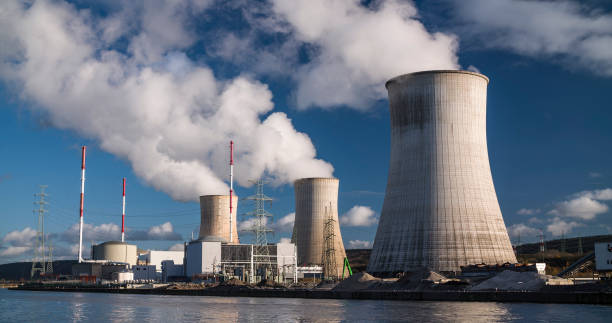
Today’s world is increasingly focused on energy efficiency and environmental sustainability. Natural gas has become a main character in the global energy conversation. As both developed and developing countries seek alternatives to more polluting fossil fuels like coal and oil, natural gas. These fossil fuels have emerged as a cleaner-burning option to power homes, fuel vehicles, and generate electricity. However, this article explores natural gas with its advantages and disadvantages. In addition, the world needs to cut its greenhouse gas emissions to meet the sustainable goal and invest in the transition to renewable energy for the future.
One of the biggest selling points of natural gas is that it burns more cleanly than coal and oil due to lower carbon dioxide (CO2) emissions per unit, less costly per unit of energy and more readily available domestically in abundant supply. Moreover, it is the cleanest of all fossil fuels, and the main products of combustion of natural gas are carbon dioxide and water vapour. However, the combustion of natural gas releases a small amount of nitrogen oxides (NOx), sulfur dioxide (SO2), carbon dioxide (CO2), and carbon monoxide (CO) in comparison to other reactive hydrocarbons.
Natural gas is one of the most reliable energy sources available today. This can be used for a wide range of applications, from residential heating to fueling vehicles. In the industrial sector, natural gas is used as both a fuel and a feedstock for the production of chemicals, fertiliser and plastics. The versatility makes natural gas a significant component of many industries that contribute to economic growth and job creation. In reference to combined cycle gas turbine (CCGT) plants, it is the result of combining a steam turbine and a gas turbine, each one powering its own generator, with its higher efficiency compared to a conventional thermal plant.
The United States has become the largest natural gas producer in the world with the introduction of hydraulic fracturing technology and horizontal drilling. This domestic production makes natural gas abundant and relatively affordable. However, the abundant supply contributes to stable prices and energy security for gas-producing countries.
Natural gas is useful in providing basic ingredients for different products like plastics, anti-freeze and fabrics. Industry accounts for about 25% of natural gas use across all sectors. On the other hand, it is primarily used in the metal, chemical, petroleum refining, stone, clay, glass and in food processing industries. In addition, it is useful in residential heating, cooking, transportation and for backup power like solar and wind.
Natural gas is supportive in transforming renewable energy, due to which the environmental constraints of energy use are becoming more apparent with economic growth. Furthermore, natural gas acts as an essential aid to energy security because it has an important role when it comes to progressively lowering the GHG emissions by linking it to energy production. In addition, this transition highlights that there is no threat of struggle with fossil-dependent countries because it provides a smooth, socially and economically acceptable transition. However, natural gas is recognised as of great importance to the world today because it deals with the environment in a sustainable manner.
Fossil fuels also harm the environment as it is a non-renewable source toward the environment. Natural gas still pollutes the environment because it comes from decomposed plants and buried animals deep under the earth’s surface for millions of years. This is why it is considered a non-renewable resource. The major reason for considering natural gas as still fuel is due to that methane is the main component of natural gas, making up approximately 70% or more of raw natural gas in the ground and well over 95% of the processed gas for burning energy. During the burning procedure, methane transforms into CO2, but before then, it can escape into the atmosphere in parts of gas infrastructure like valves and pipes. These leaks contribute to climate change and cause global warming. However, natural gas emits carbon dioxide and methane, which are dangerous greenhouse gases. This shows that the energy of transition and climate change mitigation requires more resources, as natural gas is not enough and is dangerous for the greenhouse effect.
Methane leakage is considered a fugitive emission in which discharge of gases or vapours from pressure-containing equipment or facilities, and from components inside an industrial plant, such as valves, piping flanges, pumps, storage tanks, compressors, are released and impact the environment. The constant leakage of this gas escalates the global warming issue. As an example, there is a high degree of uncertainty about the level of fugitive emission in most of the major oil and gas producing countries such as Russia is considered one of them. However, it proves that evaluation of fugitive emissions is a climate issue but also a political and economic concern.
Natural gas is abundant but not infinite. It shows that it will eventually become expensive after passing each year, and also make it difficult to adopt any other alternative to this facility. According to the U.S. Energy Information Association, the storage of natural gas is expected to last around 86 years, but in reality, the finite nature of natural gas reserves underscores the importance of transitioning to renewable and sustainable energy sources. However, the overall situation highlights that natural gas is a finite and non-renewable resource that does not last for a long period, so a heavy reliance on non-renewable resources raises concerns about long-term energy sustainability. In addition, coal and natural gas are expected to last a little longer than oil. If fossil fuels continue to be used at the current rate without finding additional reserves, it is expected that coal and natural gas will last until 2060.
The reliance on natural gas from particular regions creates geopolitical challenges and energy security issues. As countries heavily depend on natural gas imports may face vulnerability to supply disruptions or price fluctuations. Diversification of energy sources and development of domestic resources can help mitigate these risks. It is important to point out that in comparison to oil, the geopolitical risk of natural gas is much lower. Moreover, natural resources provide the raw materials for generating electricity and powering the world, while geopolitical risks can disrupt energy supply chains and threaten the stability of most countries that use renewable resources. However, the findings indicated that the energy security index is positively associated with various determinants, including natural resources, geopolitical risk, CO2 emissions, and renewable energy consumption.
In the future, natural gas will produce fewer emissions in comparison to other fossil fuels, which is still carbon-intensive energy source. Moreover, the challenge lies in balancing the need for energy security with the goal of reducing greenhouse gas emissions and achieving a sustainable energy future. However, carbon capture and storage technology is readily advancing and is a strong mechanism to reduce and eventually eliminate the carbon emissions of natural gas energy. Moreover, the different stages of carbon storage may include site selection, characterisation, injection, and post-injection monitoring. For instance, site selection involves the capability of identifying suitable geological formations for Carbon dioxide storage. However, to reduce carbon emissions, it is necessary to assess the properties of formations to ensure safe and effective storage.
However, natural gas is often painted in two different lights as it works as a clean fuel of the future, while other conditions warn against stopping the fossil fuel independence. On the other hand, natural gas offers real benefits like cleaner burning and versatile availability. while the risk may include global warming, fugitive emissions, abundance in nature but with limited availability, vulnerability in supply disruptions and challenges in balancing the need for energy security by reducing greenhouse gas emissions. This shows that the energy of transition and climate change mitigation requires more resources, as natural gas is not enough andis dangerous for the greenhouse effect.

This post has been authored and published by one of our premium contributors, who are experts in their fields. They bring high-quality, well-researched content that adds significant value to our platform.


